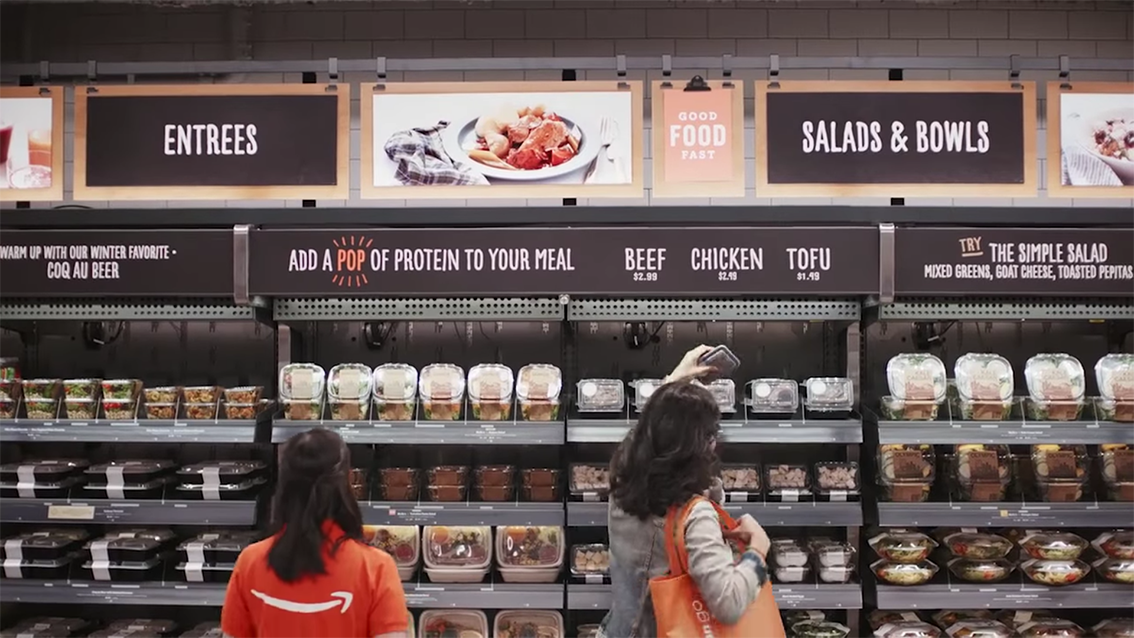Amazon.com on December 5 said that it will open a bricks-and-mortar grocery store called Amazon Go, an ambitious bid by the once-online-only retailer to gobble up more of Americans’ shopping dollars by taking the fight more directly to traditional supermarkets and big-box stores.
The store will be powered by a web of technology that allows customers to fill their shopping bags and walk out without going through a checkout process, a concept that has long been discussed in the retail industry but that has not been implemented at major US stores. The idea is that it will shave time off the shopping experience, according to the Independent Online.
Here’s how Amazon Go will work: Customers download an app and then swipe their smartphones as they walk through the store’s entrance. Then they start picking up groceries. In a process that the company does not describe except to say that it involves computer vision, machine learning and artificial intelligence, every item the shoppers tuck into their bags or carts is tracked on the phone. If an item is put back on the shelf, it’s deleted. As shoppers exit, their bill is calculated, a digital receipt appears on their phones, and their Amazon account is charged. This video produced by the company offers visuals that might help you imagine what that will look like.
The store is set to open in Seattle, Amazon’s home town, in early 2017. And its arrival could pose critical questions for the wider retail industry. For starters, Amazon Go will probably need fewer workers than traditional stores that rely on cashiers and clerks. If shoppers respond favorably to this low-touch customer service model, it might end up encouraging other chains to give similar setups a try to save labor costs.
If Amazon Go is successful and expanded widely, it could put serious competitive pressure on a wide range of retailers. For starters, at just 1,800 square feet, Amazon Go looks to be targeting what are called fill-in trips, quick errands when shoppers need just a couple of items. In recent years, drugstores and convenience stores have proved to be potent competitors to supermarkets for those kinds of shopping trips. A fast-growing Amazon Go could present competition for chains such as CVS and 7-Eleven. And judging from the look of the store as seen in Amazon’s video, it will have an ambiance and selection that will put it up against Kroger or Whole Foods Market.
The company is promising that it will sell prepared foods made by “on-site chefs,” meaning it will be fighting for the same breakfast, lunch and dinner spending that fast-casual and carryout restaurants vie for. Amazon Go also plans to sell prepackaged meal kits with the ingredients to make a home-cooked dinner for two. That could produce competition for the wave of meal kit start-ups such as Blue Apron, HelloFresh and Purple Carrot.
Amazon’s decision to sell groceries in physical stores would seem to be an acknowledgment of how hard it has proven to sell them on the Internet. Despite the explosive growth of e-commerce, grocery has largely remained an old-school business, with less than 2 percent of sales taking place online.
Major grocers were likely not shocked by Amazon’s announcement: Rumors have been circulating for months that the company planned to open bricks-and-mortar stores that sold food. And the e-commerce company has already shown interest in physical retailing by opening bookstores. So, in theory, legacy chains have been preparing for Amazon to try to encroach on their turf.


